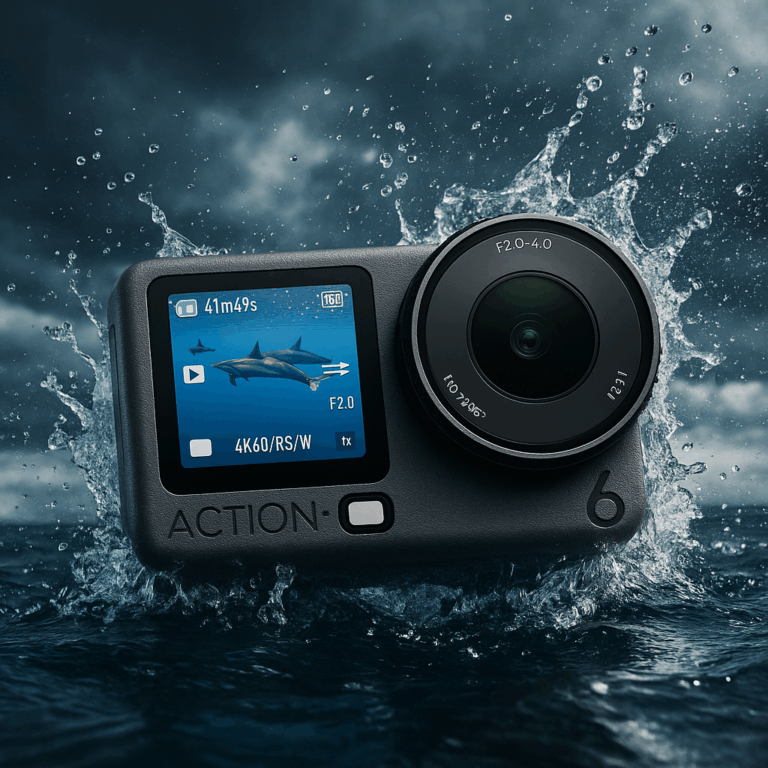Key specs and features
- Sensor: 1/1.3-inch CMOS (DJI-quoted dynamic range; excellent for the size)
- Video: up to 4K/120fps (also 4K/60), electronic stabilisation
- Control: gesture / nod to record, live preview via the Dock, supports two wireless mics
- Waterproofing: 10 m without a housing
- Dimensions/weight: ~57 mm length, 52 g
- Multifunctional Vision Dock: adds a 1.96″ OLED touchscreen, extends runtime, functions as a charger and remote
Battery and runtimes
Expect roughly ~55–135 minutes depending on mode and whether you’re using the Dock. High-draw settings like 4K/120, pre-record buffers, Wi-Fi preview, or dual-mic capture will reduce runtimes, while more modest frame rates paired with the Dock can stretch recording time significantly.
Price and availability (Australia)
In Australia, the DJI Osmo Nano Standard Combo (64 GB) is priced at AUD $529. The camera launched on 23 September 2025 with rollouts across regions following announcement. Local bundles and higher-capacity options may vary by retailer.
Who it’s for
- Vloggers and commuters who want a wearable, always-with-you camera
- Travel/POV creators who prioritise weight and speed over max specs
- Shallow-water shooters (snorkelling, rock pools) who benefit from 10 m waterproofing out of the box
Where it fits vs GoPro’s Lit HERO
GoPro’s Lit HERO solves low light with built-in LEDs and an aggressive price; DJI’s Nano solves the size/weight problem with an ultra-compact body and modular Dock for flexibility. If you frequently shoot in dim light without external gear, Lit HERO’s integrated illumination is convenient. If you want a tiny, wearable camera with hands-free control and a dockable screen/charger, the Nano is a compelling pick.
Limitations to note
- Battery life can be short in power-hungry modes without the Dock
- Low-light still benefits from supplemental light in very dark scenes
- Stabilisation is electronic; extreme motion may show rolling-shutter artefacts vs heavier flagships
Final thoughts
The DJI Osmo Nano leans into a future where you capture more because your camera is always with you. It’s not chasing spec-sheet extremes; it’s removing friction. For many creators, that’s the upgrade that matters most.











